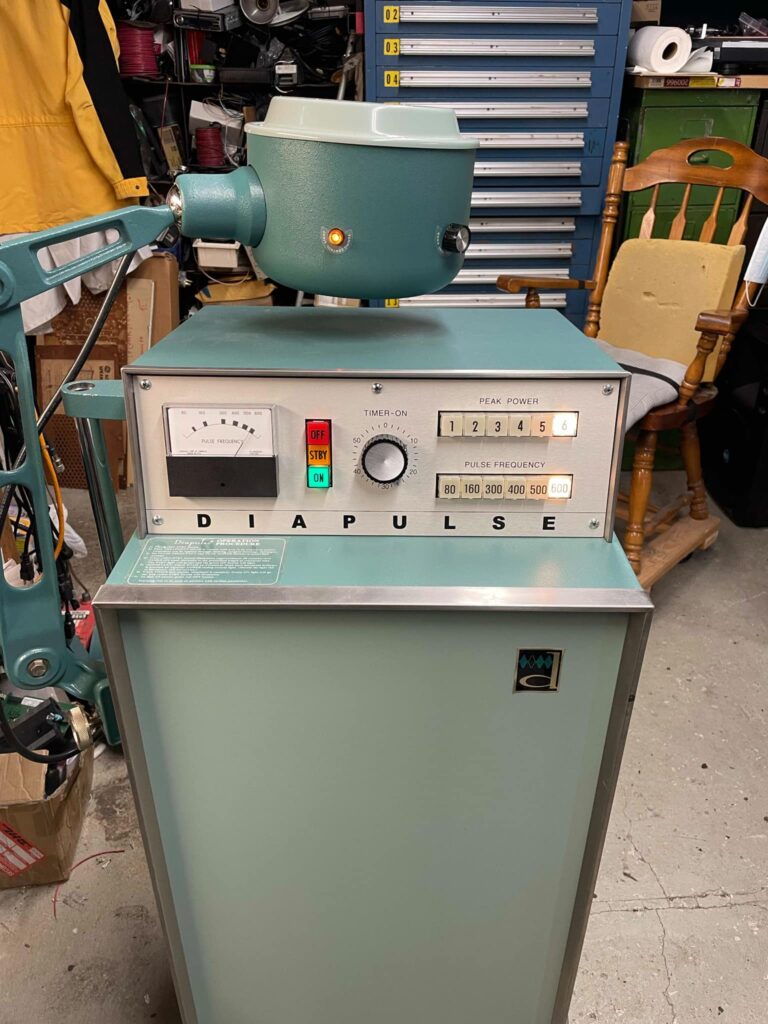The Diapulse Machine: A Closer Look at a Groundbreaking Therapeutic Device

● As medical science and technology continually advance, healthcare practitioners are
constantly seeking innovative ways to enhance patient care. The Diapulse machine is
one such innovation, a therapeutic device based on pulsed electromagnetic field (PEMF)
technology that is quietly transforming how certain conditions are treated. Although
lesser-known in the broader public discourse, its use in promoting tissue healing and
pain management is gaining attention in specialized medical fields. This editorial
explores the technology behind Diapulse, its applications, and its potential for broader
medical adoption.
●
● Understanding the Technology
●
● The Diapulse machine operates on the principle of PEMF therapy, which uses short
bursts of high-frequency electromagnetic waves to stimulate healing at the cellular level.
Unlike continuous wave devices, the Diapulse machine generates pulses of
electromagnetic energy that are specifically tuned to penetrate tissues without causing
thermal effects, thus making the therapy both non-invasive and safe for repeated use.
●
● The technology behind the Diapulse system hinges on its ability to enhance
microcirculation and cellular metabolism. The electromagnetic pulses create small
electrical currents in the tissue, which lead to increased blood flow, reduced
inflammation, and faster cell regeneration. These effects have been documented to help
in various stages of the healing process, particularly in cases of acute injuries, chronic
wounds, and even some post-surgical conditions.
●
● Proven Clinical Applications
●
● One of the most compelling aspects of the Diapulse machine is its proven ability to
accelerate wound healing and manage pain, particularly in situations where conventional
treatments have struggled. Clinical studies have shown that Diapulse is highly effective
in treating chronic non-healing wounds, such as diabetic ulcers and pressure sores
(decubitus ulcers). Patients who suffer from these conditions often face prolonged
healing times, which can lead to severe complications. By stimulating blood flow and
tissue repair, Diapulse therapy can significantly reduce healing time, thus preventing
infections and other complications.
●
● A pivotal study conducted in 2011 demonstrated the efficacy of PEMF therapy in
reducing postoperative swelling and promoting faster recovery in patients who had
undergone surgery. In many cases, patients treated with Diapulse after surgery reported
less pain, lower levels of inflammation, and shorter recovery times compared to those
who received standard treatments. This makes Diapulse a particularly valuable tool in
plastic surgery and orthopedic post-op care, where minimizing swelling and enhancing
tissue recovery is critical.
●
● Sports injuries are another area where Diapulse therapy has shown great promise.
Whether it’s a sprain, strain, or contusion, Diapulse helps athletes recover faster by
reducing edema (swelling) and pain without the need for painkillers or invasive
procedures. Its ability to improve tissue oxygenation and stimulate cellular repair
processes is particularly beneficial for athletes looking to get back to peak performance
quickly.

●
● Benefits Beyond Wound Healing
●
● In addition to wound care, Diapulse has been shown to be an effective pain
management tool. The PEMF technology targets nerve endings and helps reduce
inflammation, which in turn alleviates pain, especially in conditions like arthritis,
fibromyalgia, and neuropathic pain. Unlike traditional pain management options such as
pharmaceuticals, Diapulse therapy is non-addictive and free from the side effects
associated with long-term medication use, such as gastrointestinal issues or
dependency.
●
● Moreover, Diapulse has been used successfully to treat burns and soft tissue injuries,
significantly reducing the time it takes for the skin and underlying tissues to regenerate.
The machine has been employed in burn units to help patients heal with less scarring
and discomfort, an especially important consideration for burn victims undergoing skin
grafts and reconstructive surgeries.
●
● Evidence-Based Results
●
● One of the strongest arguments for the Diapulse machine’s effectiveness lies in the
growing body of clinical research supporting its use. For example, in a randomized
clinical trial involving post-operative patients recovering from abdominal surgery, the
group treated with Diapulse experienced a 50% reduction in wound infection rates
compared to those receiving standard care. Similar studies in the treatment of
post-mastectomy lymphedema—a common complication after breast cancer
surgery—showed that Diapulse reduced swelling more effectively than compression
garments alone.
●
● Furthermore, a study published in the “Journal of Wound Care” in 2007 concluded that
Diapulse therapy significantly improved the healing of diabetic foot ulcers. Diabetic
patients, who often suffer from poor circulation, benefit from the machine’s ability to
increase blood flow and oxygenation to the extremities, speeding up the healing process
for ulcers that might otherwise lead to amputation.
●
● Addressing Skepticism and Limitations
●
● Despite its clinical success, the Diapulse machine has faced some skepticism. Critics
argue that while PEMF therapy shows promise, the body of research needs further
expansion, particularly with larger sample sizes and more diverse clinical settings. Some
medical professionals remain cautious, as the technology is still relatively new compared
to more established treatment modalities.
●
● Additionally, insurance coverage for Diapulse treatments can be limited, which may
make it less accessible to some patients. However, as more research underscores its
benefits, it’s likely that this will change, leading to broader acceptance and integration
into mainstream healthcare.
●
○ Panagiotis John Malaspinas










Σχόλια Facebook